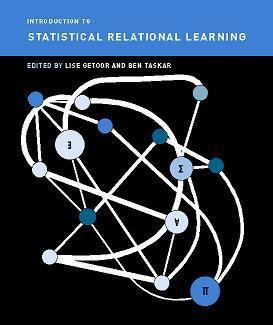 | ||
An introduction to statistical relational learning srl markov logic networks mln
Statistical relational learning (SRL) is a subdiscipline of artificial intelligence and machine learning that is concerned with domain models that exhibit both uncertainty (which can be dealt with using statistical methods) and complex, relational structure. Note that SRL is sometimes called Relational Machine Learning (RML) in the literature. Typically, the knowledge representation formalisms developed in SRL use (a subset of) first-order logic to describe relational properties of a domain in a general manner (universal quantification) and draw upon probabilistic graphical models (such as Bayesian networks or Markov networks) to model the uncertainty; some also build upon the methods of inductive logic programming. Significant contributions to the field have been made since the late 1990s.
Contents
- An introduction to statistical relational learning srl markov logic networks mln
- Markov logic for statistical relational learning
- Canonical tasks
- Representation formalisms
- References
As is evident from the characterization above, the field is not strictly limited to learning aspects; it is equally concerned with reasoning (specifically probabilistic inference) and knowledge representation. Therefore, alternative terms that reflect the main foci of the field include statistical relational learning and reasoning (emphasizing the importance of reasoning) and first-order probabilistic languages (emphasizing the key properties of the languages with which models are represented).
Markov logic for statistical relational learning
Canonical tasks
A number of canonical tasks are associated with statistical relational learning, the most common ones being
Representation formalisms
One of the fundamental design goals of the representation formalisms developed in SRL is to abstract away from concrete entities and to represent instead general principles that are intended to be universally applicable. Since there are countless ways in which such principles can be represented, many representation formalisms have been proposed in recent years. In the following, some of the more common ones are listed in alphabetical order:
